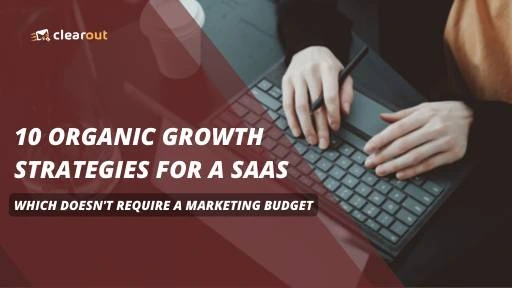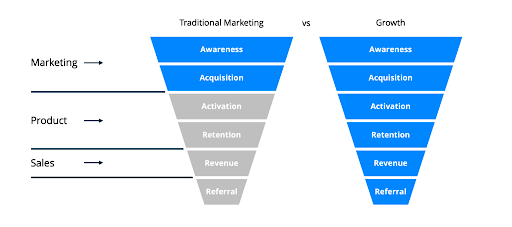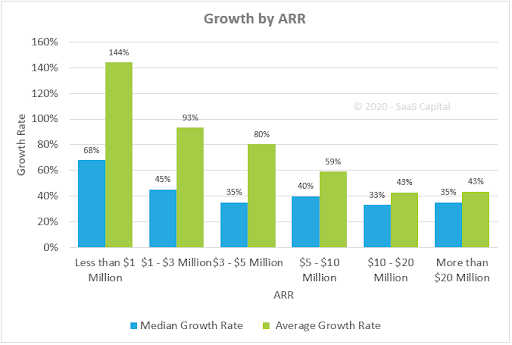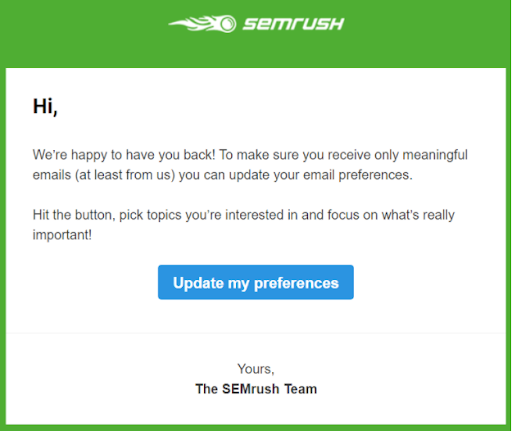- Products
- ProspectSQL/MQL list building with high levels of personalization, real-time data enrichment and prospect search
- Email FinderFind individual or bulk emails by entering the person & company name or domain
- Email VerifierVerify emails addresses individually, in bulk or through API, with 99% accuracy
- Clearout For SheetsVerify email addresses directly on Google Sheets with Clearout for sheets add-on
- ClearoutPhoneValidate phone numbers across 240+ countries in bulk, quick or real time validation Free Tools
- Disposable Email Checker
- Reverse LinkedIn Profile Lookup Tool
- Reverse Email Lookup Tool
- Email List Cleaner
- Resource
- Pricing
- Integrations
- Enterprise
- Login
A Complete Guide to Grow your SaaS Organically without Spending Anything on Marketing

Today, we rely more than ever on SaaS technology, particularly since the pandemic has forced more people to work from home. SaaS companies like Slack and Zoom have always existed, but their usage has grown more than ever. Zoom is the most successful case post-pandemic, spiking its revenue up 169%. It generated $328.2 million in revenue compared to the time before-pandemic.
According to Flexera, currently, 71% of enterprises use SaaS apps to improve IT service delivery efficiency and business solution scalability. SaaS is becoming an increasingly significant part of IT spending for businesses, as they are among the most accessible tools to adopt and implement.
In this quickly growing field, a lack of growth might be detrimental to your company. To catch up to the pace of the market, you need to be creative and adopt tactics other than traditional marketing. Growth marketing is a data-driven strategy that doesn't just focus on marketing; it also considers factors other than marketing. It also focuses on retention of customers and growth of revenue.
According to Flexera, currently, 71% of enterprises use SaaS apps to improve IT service delivery efficiency and business solution scalability. SaaS is becoming an increasingly significant part of IT spending for businesses, as they are among the most accessible tools to adopt and implement.
In this quickly growing field, a lack of growth might be detrimental to your company. To catch up to the pace of the market, you need to be creative and adopt tactics other than traditional marketing. Growth marketing is a data-driven strategy that doesn't just focus on marketing; it also considers factors other than marketing. It also focuses on retention of customers and growth of revenue.

SaaS Industry Growing Stats
Almost all important metrics indicate that now is a fantastic time to start a SaaS firm.
According to a survey conducted by Synergy Research Group, the SaaS sector is sustainably growing at a rate of 30% each year. Microsoft and Salesforce development, followed by Adobe, SAP, and Oracle being the top growth industries in this sector.
According to Gartner, the cloud services market will grow three times faster than overall IT services by 2022, with SaaS accounting for $143.7 billion. Gartner predicts that around 28% of IT spending will have shifted to the cloud by the same year.
With firms shifting from on-premises licensed software to subscription-based SaaS models, we see a lot of new SaaS startup ideas emerge as well as growth in established businesses. For example, Vajro, a cloud-based mobile commerce platform, has grown tremendously since January 2020. “We have grown at over 700% over the past 12 months,” said Baskar Agneeswaran, the Chennai-based SaaS startup CEO.
SaaS Capital conducts an annual survey of B2B SaaS business metrics in the first quarter of every year.
According to a survey conducted by Synergy Research Group, the SaaS sector is sustainably growing at a rate of 30% each year. Microsoft and Salesforce development, followed by Adobe, SAP, and Oracle being the top growth industries in this sector.
According to Gartner, the cloud services market will grow three times faster than overall IT services by 2022, with SaaS accounting for $143.7 billion. Gartner predicts that around 28% of IT spending will have shifted to the cloud by the same year.
With firms shifting from on-premises licensed software to subscription-based SaaS models, we see a lot of new SaaS startup ideas emerge as well as growth in established businesses. For example, Vajro, a cloud-based mobile commerce platform, has grown tremendously since January 2020. “We have grown at over 700% over the past 12 months,” said Baskar Agneeswaran, the Chennai-based SaaS startup CEO.
SaaS Capital conducts an annual survey of B2B SaaS business metrics in the first quarter of every year.

The growth rate indicates how much a company's revenue has increased over time.
Up until the age of around 12 years, the age of a company and its growth rate are inversely associated. According to Saas Capital, the growth rate stabilizes at around 20% for 13 years old and older organizations. The average age of a bootstrapped company was ten years, while the average age of a VC-backed company was six years.
Luckily, SaaS is still in its early stages, with plenty of room for expansion. Hence, now is the perfect time to mold your business strategies so that you can boost your product performance and ROI.
Up until the age of around 12 years, the age of a company and its growth rate are inversely associated. According to Saas Capital, the growth rate stabilizes at around 20% for 13 years old and older organizations. The average age of a bootstrapped company was ten years, while the average age of a VC-backed company was six years.
Luckily, SaaS is still in its early stages, with plenty of room for expansion. Hence, now is the perfect time to mold your business strategies so that you can boost your product performance and ROI.
How To Track Your SaaS Growth?
Growth will not be handed to you on a silver platter, no matter your business type. SaaS companies mainly rely on future revenue and it should be spread out over a long duration. Tracking growth metrics goes a long way to ensure that your SaaS grows continuously.
Many businesses overlook the information before them, causing them to lose their profits (or worse, businesses). Tracking your growth as closely as possible will help you make the appropriate decisions to keep you in the right direction.
Each department in the digital business environment has metrics that measure their success. Sales measures how many deals got closed, marketing measures how many leads they find each month, etc. It’s like taking a look at the bigger picture of your business when you want to maximize your growth.
We are going to talk about a few ways to keep track of the growth of the your business:
Many businesses overlook the information before them, causing them to lose their profits (or worse, businesses). Tracking your growth as closely as possible will help you make the appropriate decisions to keep you in the right direction.
Each department in the digital business environment has metrics that measure their success. Sales measures how many deals got closed, marketing measures how many leads they find each month, etc. It’s like taking a look at the bigger picture of your business when you want to maximize your growth.
We are going to talk about a few ways to keep track of the growth of the your business:
1. Churn rate
The customer churn rate is a metric that quantifies how much business you’ve lost in a specific time. It’s one of the most crucial indicators of your company’s health on a daily basis. Revenue churn is a proportion of overall revenue representing the amount of money paid by consumers who leave your service each month.
It's more beneficial to track revenue churn rather than customer churn because revenue churn is a better predictor of a company's health.
It's more beneficial to track revenue churn rather than customer churn because revenue churn is a better predictor of a company's health.
2. User Activation rate (UAR)
User activation is crucial, especially for newly-formed and growing SaaS companies. Figuring out and keeping track of what people interact with the most is critical for converting new users into long-term customers.
3. Monthly recurring revenue/ Annual recurring revenue (MRR/ARR)
Monthly recurring revenue measures how much revenue your customers generate every month. It's an important aspect of SaaS firms where neither the income nor the expenses are consistent month to month.
ARR = 12 x MRR
Recurring revenue makes the SaaS model attractive. A 10% MRR MoM growth rate is a fair target for SaaS companies trying to break into the upper echelon.
4. Customer Lifetime Value (CLV)
Customer lifetime value estimates how much revenue you’ll make from the average customer before they churn. The average customer's lifetime value forecasts how much money you'll make before they leave.

The Best Organic Growth Strategies For Your SaaS
Before going to sponsored channels, a SaaS firm should start by identifying and creating at least one organic growth channel. A SaaS company's initial foundations must be built on a thorough understanding of its customers, a great product, and successful positioning.
1. Content Marketing
Because content marketing is a competitive sector for SaaS marketing, it should be a vital component of your growth marketing strategy. An effective plan reduces Customer Acquisition Cost (CAC) while increasing working capital for other areas of the company.
Implementing practice:
- Sales Funnel - Guide your audience down the road to becoming a valued subscriber. Start with building awareness. This helps the reader understand your product, then it lets you shift your target from a casual reader into a subscriber. Finally, by applying the correct techniques, you may contact the audience that is ready to buy your product.
- Define goals - You must identify your goals and how you will measure the effectiveness of your content effort from the beginning. When people know what you're doing, you can attract clients this way.
- Repurposing content - White papers and ebooks are great content assets for generating leads, but they're expensive and time-consuming. Repurposing can add a lot of value to the existing content. For example, turning an ebook into a YouTube video, an infographic, or a blog series.
2. Co-marketing
Co-marketing is a cooperation technique utilized by firms with similar products to increase marketing efforts and broaden their audience. It can be used at any firm size and will strive to progress. It is a low-cost method that aids in the development of brand identity, audience expansion, and increased sales and revenue.
Implementing practice:
- Common Goal - It's a give-and-take process that allows both members to understand where they stand and align their aims for the strategy to succeed. Companies will never achieve the benefits they want from a relationship if their aims aren't aligned and unclear.
- Determining each other’s strengths and weaknesses - Both parties must put in the effort to reach an objective. Recognizing each other's characteristics and devising a strategy to work around them will ensure that the best is brought to the table.
- Roles - To avoid conflicts, it's critical to define each party's duties at an early stage clearly. Clarifying roles in terms of project roles and funding will help you avoid disputes emerging halfway through the contract.
3. SEO
Without relying on ads, SEO for SaaS platforms can drive leads into your sales funnel organically. SEO can assist you in improving your ranking so that your SaaS company doesn't have to pay for adverts for specific search phrases.
Implementing practice:
- Target right keywords - Your product and feature pages are your commercial pages; these are the pages that explain what your software offers. The proper keywords at the top of the search results will lead to more conversions.
- Build comparison - Put yourself out there (a little more), because once the audience has decided on a product, they will compare it to the market's top competitors. As a result, making a good first impression is vital. Compare and contrast your service to the competition, focusing on the key features you offer and how it differs.
- Backlinks - Offering to write a guest blog for them in exchange for a backlink is one strategy to create a relationship with another firm.
4. Email Marketing
Collecting email addresses is the first step in leveraging email to enhance organic traffic. Email marketing is still the most popular way to share material online. Sending emails generates traffic to blogs, websites, etc, and improves the amount of social sharing.
Implementing practice:
- Verify your leads - The first step to successful email marketing is valid and quality email data. If you send out emails to invalid or non-existent email addresses, it will damage your reputation rather than doing any good for your business. Thus, the first thing you should consider is Email Validation and Verification.


5. Get on sites that expose you to your target market
To grow SaaS, you first need to be exposed to the right kind of audience. And imagine when the right leads start finding you rather than you looking for them. What could be better, right?
The best and fastest way to make your brand visible to a larger audience base is by listing your SaaS product on various product listing sites and collaborating with other brands that already have a similar audience base.
The best and fastest way to make your brand visible to a larger audience base is by listing your SaaS product on various product listing sites and collaborating with other brands that already have a similar audience base.
Implementing practice:
- Product Hunt - Product Hunt is a SaaS product listicle site. The site receives over 4 million monthly visitors and has a community of over 40,000 registered users. A successful product launch to this community can result in thousands of new paid subscribers. It has worked great for many SaaS, including Clearout, and is an excellent opportunity that you definitely should not overlook.
- Deal sites for SaaS - SaaS and software deal sites like Appsumo, SaaS Invaders, Pitchground, etc are another great option to grow your company and boost sales. These websites have the strength to expose your SaaS business to thousands of visitors quickly and grab the attention of new customers.
- Collaborate with other businesses - Another effective way to gain the attention of potential customers. When you collaborate with other SaaS organizations in the same niche, you are likely to turn them into your customers as well. For example, Clearout is an email validation service that seamlessly integrates with Moosend. The Moosend users looking for an email validation tool might consider using Clearout as the solution. This benefits both the parties and is definitely worth trying.
6. Social Proof
When it comes to increasing one-time purchases by new consumers, simple promotional messaging isn’t always enough; you also need to grow subscribers who are willing to make a long-term commitment to using your software platform.
Despite everything, unsubscribers are inevitable. So you will need to generate enough sign-ups to replace your canceled or downgraded plans to keep up with your monthly churn rate (usually between 5-15 percent for SaaS solutions geared at small and medium businesses).
Despite everything, unsubscribers are inevitable. So you will need to generate enough sign-ups to replace your canceled or downgraded plans to keep up with your monthly churn rate (usually between 5-15 percent for SaaS solutions geared at small and medium businesses).
Implementing practice:
- Showcase your case studies - For most internet marketers, case studies represent the pinnacle of social proof achievement. Here, you can delve into the reasons why your subscribers might have succeeded as a result of your product, as well as quantitative data on how they do it.
- Success stories - Social media is an excellent platform for spreading social proof, from short testimonial films to in-depth success tales, it’s all for the goal of attracting new subscribers.
- Unhappy subscribers - Monitoring talks about your brand and software on the internet is referred to as social listening. Don't dismiss or remove any complaints you come across. Rather, acknowledge the issue and attempt to resolve it.
7. Re-target
According to 99 Firms, the retargeted displays can boost the chances of website conversion by as much as 150%. It allows you to keep your brand in front of your visitors even after they leave your website.
The retargeting strategy is straightforward. A potential consumer comes to your site and leaves without making a purchase, but you follow them while they're there.
The retargeting strategy is straightforward. A potential consumer comes to your site and leaves without making a purchase, but you follow them while they're there.
Implementing practice:
- Reaching website visitors - The most straightforward way to begin a retargeting campaign is to remarket to everyone who visits your website. This allows you to provide discounted offers and vouchers to potential buyers who visited your pricing page but did not complete the transaction.
- Customer retention - Looking after your current customers is the competitive advantage to succeeding in the SaaS world. Nurturing is one of the best strategies to avoid churn, and retargeting can be used as a customer retention technique.
- Free trial - Free trials are an important aspect of a SaaS company's marketing stack. According to a Totango study, requesting credit card information reduces the number of free trial users who convert to paying customers by half. Retargeting potential consumers through supporting the prospect during their trial can make a huge difference.
8. Social Bookmarking
Social bookmarks keep information online rather than on a device, making it available at any time and from any location. There are specialized web-based tools that can assist you in gathering and organizing content that your clients are interested in. When it comes to social bookmarking, social media is an excellent tool.
There are 1.74+ billion websites on the internet. Regularly carrying out proper strategies on the right websites can help your SaaS in steady growth.
There are 1.74+ billion websites on the internet. Regularly carrying out proper strategies on the right websites can help your SaaS in steady growth.
Implementing practice:
- Quality Sites - Posts on questionable sites can hurt your SEO, reducing ranking in search engine results.
- Engaging with Audience - Interacting with other users on social bookmarking sites is just as important as it is on social media sites. Avoid creating more accounts than you can manage. Being active is crucial to engagement, and there's no use in having an account if you don't manage your profile on the websites you use.
9. Social Media
What’s the place people often visit, which also comes in handy when they are looking for a humanized solution? Social media. Use social media as leverage and establish your brand as a thought leader instead of appearing like a robot on social media, rigidly creating content.
Diversifying your social media content shapes how people view your product or service. While there has been a recent trend toward suspicion of government, NGOs, and the media, the 2021 Edelman Trust Barometer reported that business is a trusted organization with a 61 percent trust level.
Diversifying your social media content shapes how people view your product or service. While there has been a recent trend toward suspicion of government, NGOs, and the media, the 2021 Edelman Trust Barometer reported that business is a trusted organization with a 61 percent trust level.
Implementing practice:
- Twitter - Use Twitter to post links, content, and images people want to revisit. It's a great place to share links and interact with your followers.
- Reddit - Reddit is a great platform to build your presence, and it makes sure that your goal is to self-promote 20% of the time and help others 80% of the time. Contributing to multiple forums and creating fresh material can help you gain a new audience for your business. As a result of giving more than you take, more customers will trust you and spread the word.
- Quora - Half your followers are going to be with you because they think you provide value to their lives/businesses. Finding great questions that whirl your audience and writing better answers are helpful and connect with them. Optimizing your quora profile to best suit the kind of content you put out there is necessary, as is maintaining your Quora wikis and Quora spaces to grow your community.
10. Web Directories
Web directories give us online visibility, boost SEO, increase Google ranking as well as company’s brand awareness. Relevance is key to getting the most out of any strategy. Using online directories to list your business is no different. It’s one of the easiest, quickest, and most effective ways for a customer to find you.
“Strong online directories can be pivotal to the success of a business because they provide a shortcut into visibility that would otherwise take way too long to achieve or cost substantially more to buy”, says Rafael Romis, CEO, Weberous Web Design.
“Strong online directories can be pivotal to the success of a business because they provide a shortcut into visibility that would otherwise take way too long to achieve or cost substantially more to buy”, says Rafael Romis, CEO, Weberous Web Design.
Implementing practice:
- Niche Directory - Building a niche directory, SEO-wise, increases the chances of your directory ranking higher. People are more interested in specific requirements and sites that fulfill the requirement. Thousands of businesses in the same industry will be represented on a niche site. On the other hand, a generic directory will only feature a few businesses from a thousand various verticals.
- Directory Submission - Directory submission is a popular practice that allows businesses to appear in several directory listings and the websites that correspond to those listings.
- Dedicated review strategy - The impact of reviews on how high you appear in directory results is likely the most powerful. They're also one of the main ranking variables for Google's local search.
Conclusion
Although SaaS is a booming industry at the moment, organic growth doesn’t happen overnight. Growth marketers must break the rules of traditional marketing to find new ways to interact with and keep customers.
You'll also need to undertake research, use a scientific approach, and be diligent in making your methods potent and effective. The expansion of SaaS is expected to continue, with the fraction of small investors to large organizations only increasing.
You'll also need to undertake research, use a scientific approach, and be diligent in making your methods potent and effective. The expansion of SaaS is expected to continue, with the fraction of small investors to large organizations only increasing.
Build & Validate Your Email List With Clearout.io
Have a query? Reach out to us...
Recent Posts
01 Jul 2025
Best Zoho CRM Integrations for Sales & Marketing in 2025
Discover the top Zoho CRM integrations in 2025 categorized by use case. Explore how each tool's key ...
01 Jul 2025
Sales Automation in 2025: The Guide to Close More Deals Faster
Struggling with manual sales workflows? Follow this guide to explore the sales automation use cases, ...
25 Jun 2025
Top 6 Email Finder APIs in 2025 for All Use Cases
Looking for a reliable Email Finder API? Explore the top 6 email finder APIs of 2025—compare key fea ...
17 Jun 2025
Top 10 Email Spam Checker Tools Tested & Reviewed (2025)
Check out the top 10 email spam checker tools to avoid junk folders. Compare features, ratings & use ...
06 Jun 2025
How To Create a Lead Magnet That Converts in 2025
Looking for more leads? Read how to create a high-converting lead magnet in 2025 with step-by-step g ...
Prospecting ,Email Finder & Email Verification Service
Prospecting ,Email Finder & Email Verification Service
Expand your reach by discovering and verifying the ideal prospects.
Sign up & get 100 free credits | No Credit Card required




